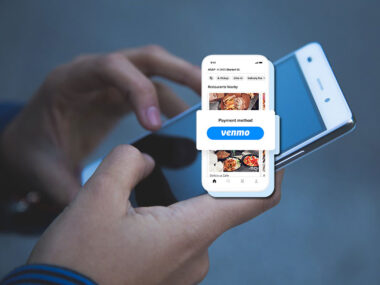When you’re trying to save money to make a big purchase, pay down debt, or just maintain a rainy day fund in case of an emergency, it can be hard to find cash to sock away. It may always seem like something comes up that sets you back — or perhaps you’re of the mind that if you can’t put away substantial sums every month, it’s not worth the trouble. After all, how much good can it do to save a dollar a week?
As it turns out, a lot of good. Even small amounts of money over time can accumulate into hundreds or even thousands of dollars. And when you challenge yourself to find creative ways to save money, you can build your little nest egg even more. One way to save money, in some cases without even really thinking about it, is a savings challenge. Whether you simply challenge yourself or compete with someone else, setting a goal and sticking with it not only gives your savings a boost, but it also gives you a sense of accomplishment.
If you’re struggling to save money, or you just want to give your savings a little boost, try some of these challenges.
Table of Contents
52-Week Money Challenge
The 52-week money challenge involves putting away a predetermined amount of money each week, steadily increasing the amount with every passing week. In other words, you save $1 during week one, $2 during week 2, $3 in week 3 and so on. Following this plan, in the last week you’ll add $52 to your savings, and have a grand total of $1,378.
While this is an easy challenge for most people to tackle, since the dollar amounts are relatively small, it’s not the only approach to a 52-week money challenge that can increase your savings. For example, transferring just $20 a week into your savings account can leave you with $1,040 after a year, and you probably won’t even notice the transaction. Or, if you have your sights set on a loftier savings goal, such as saving enough for a down payment on a home, increasing your weekly contributions will get you there faster. Try cycling your weekly contributions: start with a set amount, and increase by $10-$20 each week for four weeks, and then start the cycle again in the fifth week. For example, making contributions of $25, $35, $45, and $55 each week for four weeks, and then starting again, will net you close to $2,000 in a year.
If you’re concerned about staying on track with a weekly money challenge, try using an app that will automatically make the weekly transfers for you. You can also set up automatic transfers between your bank accounts to take place each week, keeping you on track toward your savings goal.
Reverse 52-Week Money Challenge
As the name implies, the Reverse 52-Week Money Challenge follows the same concept as the 52-Week Challenge, but begins with the largest amount. In other words, you’ll save $52 in the first week, $51 in the second, and so on, until the final week when you add $1 to your savings account. The end result is the same amount of cash as the 52-week challenge: $1,378. The benefit of following this approach is that it gets easier as you go, with the amounts dwindling as the year goes on. Also, if you start this plan on January 1, your lowest savings contributions will be around the holidays, which makes it more likely you’ll keep up with this weekly money challenge.
365-Day Money Saving Challenge
Also known as the Penny Challenge, this savings challenge requires that you start by saving one cent, and then adding an additional penny every day for 365 days. On day one you save $.01, on day 2 you save $.02., all the way to the last day of the year, when you will add 365 pennies ($3.65) to your savings jar. The end result? $667.95, all from your spare change.
This challenge is best approached using a jar or other physical container to contain your change, as your bank isn’t likely to appreciate or allow transfers of a few cents. When you finish the challenge, you can bring your coins to the bank to be counted and deposit the cash. The other option is to calculate the monthly contribution and have it deposited into your account every 30 days, but then you miss out on the fun and visual aspect of watching your savings grow.
Bi-Weekly Money Challenge
If you get paid bi-weekly, that doesn’t mean you can’t participate in a weekly money challenge. All you need to do is adjust your contributions to account for your bi-weekly pay. Ultimately you save the same amount ($1,367) as you would with a weekly challenge, but instead of adding to the pot weekly, you add 2 weeks of contributions together for a larger contribution. For example, the first 2 weeks of a bi-weekly challenge are $1 and $2, so on week 2, add $3 to your savings. Weeks 3 and 4 are $3 and $4, so add $7 when you get paid on week 4. If you are paid monthly, simply add up the contributions for the whole month ($10 for month 1) to stay on track.
The No-Spend Challenge
The best way to save money is to not spend it, and a no-spend challenge is a perfect way to see where your money actually goes and subsequently curb your spending.
There are several ways you can approach a no-spend challenge, but no matter which one you take, the first step is to track your expenses. The purpose of this is twofold. First, you have a record of your starting point so you can see exactly how much money you save by not spending. Second, tracking where your money goes helps you see the areas where you might be able to reduce your spending to see the greatest amount of savings. In other words, if you only spend a few dollars a week on coffee, but hundreds of dollars per month on books, you aren’t going to see much return by banning Starbucks runs.
Once you have an idea of how you spend, it’s time to create your challenge. You might opt to ban spending in certain categories (eating out, entertainment, clothing, etc.) or eliminate all spending for a set period. The latter is more challenging, as you are likely to incur some expenses, so you may need to set a shorter time clock. Either way, the rules are simple: During the designated period, you cannot spend any money in the categories you decide to reduce spending in. Some challenges you might undertake could be:
- No Buying Lunch for a Month: You can only bring lunch to work from home.
- No Buying Coffee for a Month: Same as no lunch, only you bring coffee from home or make it yourself at work.
- No-Spend Weekend: You can only do free activities, and must eat all meals at home.
- No-Spend Week/Month: Only purchases necessities (i.e. groceries, gas) for a month. Just be sure to define necessities and what is okay to be purchased. Otherwise, it’s possible to categorize anything as a necessity, and torpedo your savings.
- No Buying (Specific Item) for a Month: This is ideal if you spend a lot on a hobby or particular type of item (clothing, cosmetics, etc.). During the challenge period, you cannot purchase any items from that category and must use only what you already have.
- Use It or Lose It Challenge: A variation on the no-spend challenge, the Use it or Lose it challenge forces you to examine your subscriptions and services, and dump those that you aren’t using after a certain period. This includes gym memberships, streaming services, subscription boxes and other recurring expenses that are taking a bite out of your bank account without you even realizing it.
At the end of the challenge, tally up how much you saved by not spending. You may opt to deposit the cash into a designated account, or simply leave it where it is, and enjoy the feeling of victory that comes from conquering your spending.
The Bad Habit Jar
You’ve probably heard of a “swear jar,” where you need to add money whenever you use bad language — you might even already have one in your home. However, the proverbial swear jar isn’t only good for thwarting bad language; you can create a jar for any bad habits, helping you kick them to the curb while saving some money in the process. For example, if you bite your nails, drop $1 in the jar every time you sneak a nibble. Want to stakes to be higher? Add $10 every time you skip the gym in favor of a Netflix marathon, or $20 when you bring your smartphone to the dinner table. You can use a real jar for this challenge, or keep track of what you owe and add it to a savings account each week. The point is to hold you accountable for breaking your bad habits while building a little nest egg in the process. And if you break a habit and aren’t adding to the jar anymore? Choose another habit, and start over.
The Envelope Challenge
This money challenge gives you flexibility as to when and how you save money, and can be customized to your goals. To start, mark a series of envelopes with numbers, starting with 1 and going as high as you are comfortable with. Then, over the course of the year, add cash and coins to each envelope equivalent to the number marked outside. The envelope marked 1 will have $1, for example, while envelope number 17 will contain $17. You can fill the envelopes whenever you want, however you want. The more envelopes you fill, the more money you save, but if you only have envelopes marked 1-25, you’ll eventually have $325.
Image Source: https://depositphotos.com/





